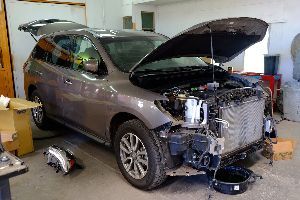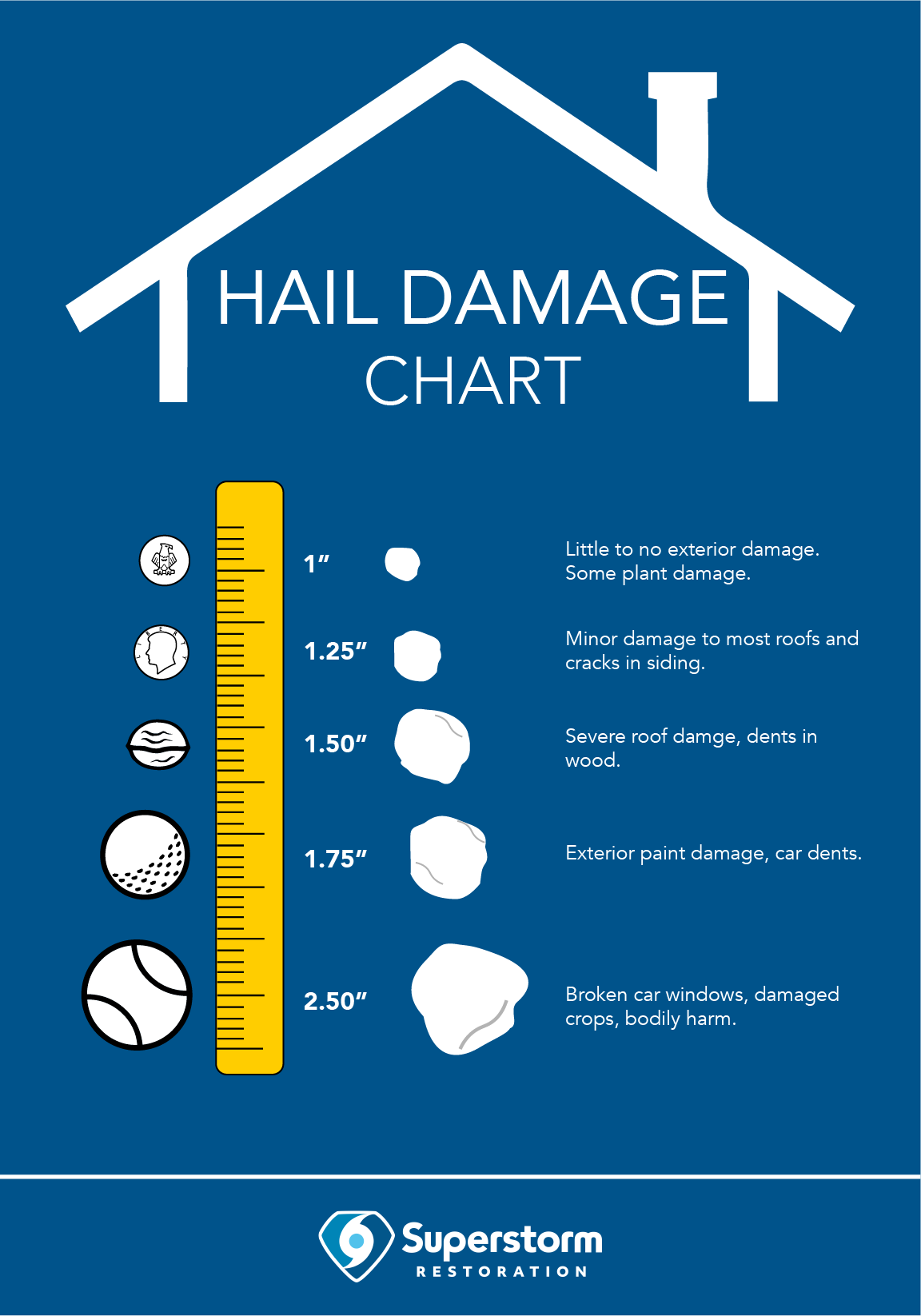You can identify car frame damage by inspecting for misalignment or gaps in the body panels and doors. Uneven wear on tires also signals possible frame issues.
Understanding the signs of car frame damage is crucial for vehicle safety and value. A damaged frame can compromise a car’s structural integrity, impacting its performance and durability. Owners should routinely check for signs such as uneven panel gaps, difficulty in closing doors or windows, and abnormal tire wear, which could indicate frame damage.
Ensuring your car is in top condition not only safeguards your investment but also protects passengers. Regular inspections by a professional can help catch these issues early, maintaining your vehicle’s reliability on the road. Recognizing these warning signs can save you from costly repairs and potential safety hazards.
Spotting The Red Flags
Detecting frame damage in a car is crucial for your safety. It ensures the vehicle operates as intended. This section reveals key signs of frame damage. Let’s learn how to spot these indicators.
Mismatched Paint And Body Panels
One clear sign of frame damage is mismatched paint and body panels. This often points to a past accident and repair job. Here’s why it matters:
- An uneven paint job may suggest hasty repairs.
- Different shades on different panels could indicate replaced parts.
- Look for over-spray on chrome trims or rubber seals, hinting at a cover-up.
Inconsistent Gaps Between Panels
Uneven gaps between car panels are a warning. They prove that the car’s frame may be bent. Here’s what to check:
| Panel Area | Normal Gap Width | Noticeable Discrepancy |
|---|---|---|
| Doors | Uniform | Gaps vary in size. |
| Hood | Even all around | One side may be wider. |
| Trunk | Consistent | Raised or lowered areas. |
Measure the gaps with a tape if unsure. Compare them to the opposite side. Check for alignment issues.
Doors And Windows As Telltales
Car accidents or wear can lead to hidden frame damage. Checking doors and windows offers clues to these hidden issues. Let’s explore how they act as telltales for frame damage.
Trouble With Opening And Closing
Doors that resist your efforts to open or close reveal possible frame distortion. A door that once moved smoothly but now sticks or doesn’t fit properly could indicate a shift in the car’s structure. Inspect each door, checking for:
- Inconsistent gaps between the doors and car body
- Dents or scrapes on the door edges
- Difficulty locking or unlocking
Windows That Don’t Fit Right
Windows that don’t line up suggest frame misalignment. To test this, look for:
- Windows that struggle to roll up or down
- Gaps or misalignment when closed
- Noises or resistance during window operation
Windows and doors serve as indicators of the car’s health. Frame damage is serious. Testing these features could save you from future troubles.
Under The Hood Clues
Detecting frame damage on a car can save you from future headaches. Under the hood, some hints suggest frame issues. Spotting these can be key to assessing a vehicle’s condition. Let’s dive into some tell-tale signs of frame distress right where the engine sits.
Misaligned Engine Components
No car runs smoothly with a misaligned engine. A glance under the hood may reveal signs of trouble. Wonky positions of engine parts could signal frame damage. These components should fit snugly and align perfectly. If things seem off, the frame might have taken a hit.
- Engine mounts: Should be straight and secure without any odd angles.
- Battery position: Look for signs of shifting or repositioning.
- Belt alignment: If belts aren’t running straight, it may indicate a larger issue.
Suspicious Welding Jobs
Keep an eye out for welding work under the hood. Unusual welds can signal repair from past accidents. These welds might look newer or different from the rest of the engine bay’s metal.
Check these weld areas:
| Location | What to Look For |
|---|---|
| Strut towers | Smooth, factory-like welds are normal; rough or patchy welds are not. |
| Firewall | Unexpected welding patches could indicate a cover-up job. |
| Radiator support | Check for consistent weld patterns that match the vehicle’s age. |
Vehicle integrity relies on a sturdy frame. Under-the-hood clues like misaligned parts and welding spots are leads to frame issues. Always pay attention to these details while examining a car for purchase or safety.

Credit: www.westsidefender.com
Beneath The Surface
Detecting car frame damage can be tricky. Visible signs may not always be apparent. Many times, serious issues lie hidden. To ensure your vehicle is safe, you must look beneath the surface. Car frames are the skeletons of vehicles, and damage to them can compromise integrity. Here are ways to spot if a car has frame damage:
Uneven Wear On Tires
Uneven tire wear might indicate frame damage. A healthy car should have tires that wear at the same rate. If one tire looks more worn than the others, it’s a warning sign.
- Check patterns of tire wear
- Compare wear across all tires
- Note any differences in tread depth
Unusual Noises And Vibrations
Noises and vibrations can signal trouble. Strained sounds or abnormal shaking during a drive may point to frame issues. If you hear rattling or feel vibrations, take note:
| Noise/Vibration Type | Possible Cause |
|---|---|
| Rattling | Misaligned frame parts touching |
| Shaking | Frame misalignment affecting balance |
Professional Inspections: A Safety Net
Suspecting frame damage in a car is like finding cracks in the foundation of a house. It’s concerning and warrants a professional look. A car’s frame is its backbone, giving it structure and integrity. Professional inspections act as a safety net, capturing issues that often slip by untrained eyes. These assessments ensure the vehicle remains safe and reliable.
Benefits Of A Certified Mechanic’s Assessment
Certified mechanics come equipped with both tools and expertise. They pinpoint problems with precision.
- Accuracy: Professionals detect subtle frame deviations.
- Safety: They ensure the car maintains its protective structure.
- Value: Correct identification can save you from costly future repairs.
- Resale: A sound frame can significantly boost a car’s market value.
Understanding The Frame Damage Report
A frame damage report is filled with technical details. Mechanics use special language in these reports.
Key elements include:
| Term | Description |
|---|---|
| Alignment | Angles of wheels to the car’s frame |
| Bends | Curves or angles in the frame |
| Crush | Points where the metal is compressed |
| Straightening | Process of realigning the frame |
This report serves as a guide. It shows the extent and specifics of the damage.

Credit: www.carfax.com
The Impact Of Frame Damage On Vehicle Value
Discovering frame damage on a vehicle is akin to finding a crack in the foundation of a house. It raises red flags about the integrity of the car. This concern extends to its value. A vehicle with a compromised frame often sees a significant reduction in worth. Let us delve into how frame damage influences a car’s resale potential and insurance matters.
Resale Concerns
Frame damage is a major deterrent for buyers. It suggests past accidents and potential future problems. This damage compromises car safety and performance. For sellers, it means providing steep discounts to attract buyers. Here’s how a damaged frame hits the resale value:
- Lower Demand: Shoppers avoid cars with past structural damage.
- Price Drops: Sellers must offer big discounts.
- Detailed Inspections: Buyers request thorough checks, often leading to further price negotiations.
Insurance Implications
Frame damage can alter how insurers view a car’s value. Claims involving structural damage lead to drastic changes in insurance policies. These changes often result in:
- Increased Premiums: Insurers see damaged cars as high-risk, leading to higher costs for owners.
- Salvage Titles: Severe frame damage may result in the vehicle being branded as salvage, affecting coverage options and costs.
Repairing frame damage to perfection is difficult. This reality means that even with repairs, a car’s value never truly recovers. Protecting a vehicle’s frame is paramount to maintaining its value and ensuring safety on the road.

Credit: www.superstormrestoration.com
Frequently Asked Questions On How Do You Know If A Car Has Frame Damage
What Are Signs Of Frame Damage On Cars?
Frame damage on cars often manifests through uneven tire wear, misaligned doors, gaps between body panels, and unusual noises. Difficulty handling the vehicle and a crooked steering wheel can also indicate frame issues.
How Can You Detect Hidden Frame Damage?
Hidden frame damage can be detected by a thorough inspection by a professional. Look for inconsistent panel gaps, check for welding spots on the frame, and inspect for any misalignment. A computerized frame analysis can provide accurate assessments.
Does Frame Damage Total A Vehicle?
Frame damage can total a vehicle if the cost of repair exceeds the car’s value. Insurance companies assess this based on structural integrity compromise and safety implications. Not all frame damage, however, leads to a total loss.
Can You Safely Repair Car Frame Damage?
Car frame damage can be safely repaired if addressed by skilled technicians using appropriate equipment. However, the severity of damage dictates reparability. Some extensive damages may not be safely repairable, affecting the vehicle’s structural integrity.
Conclusion
Detecting frame damage in your car is crucial for both safety and resale value. Ensure regular inspections, especially after accidents, to spot any signs early. Trust professionals for precise assessments. Act promptly to maintain your vehicle’s integrity and protect your investment.
Remember, a sound frame means a safe journey.
